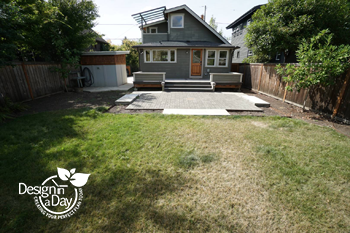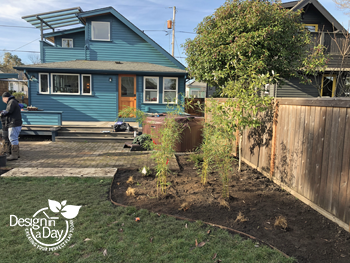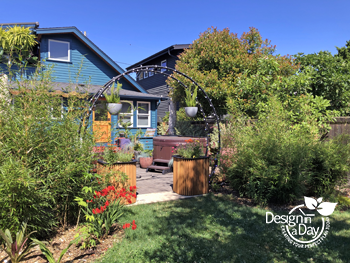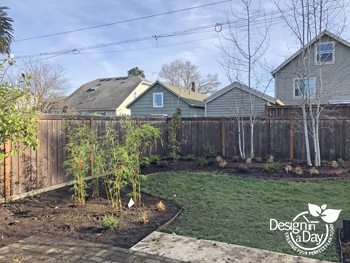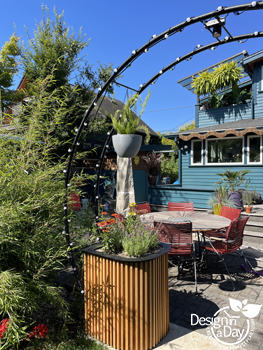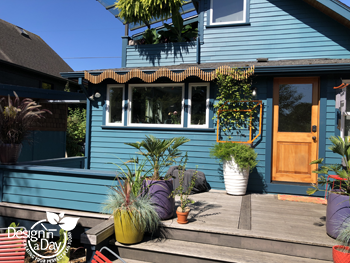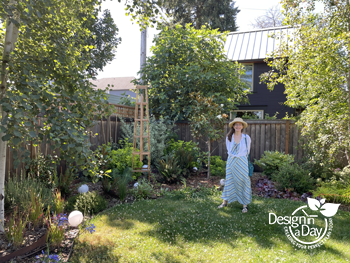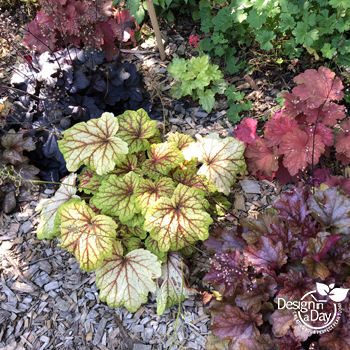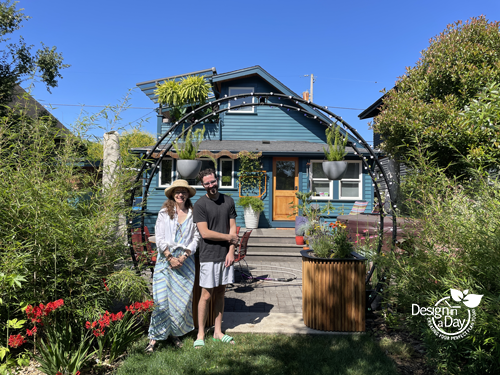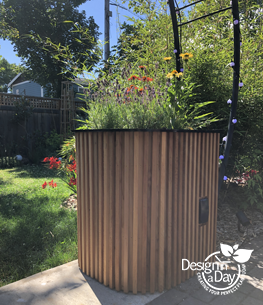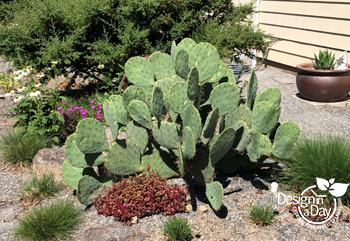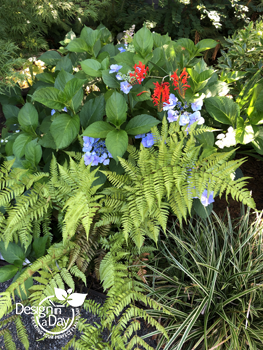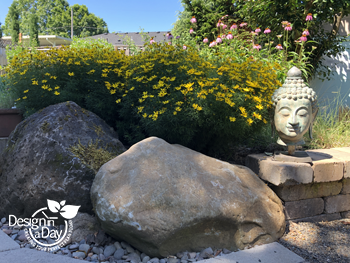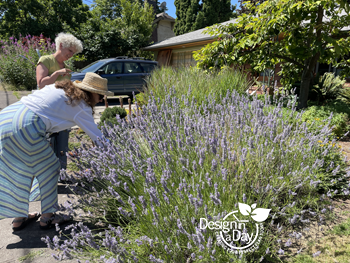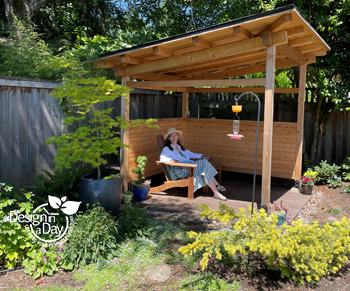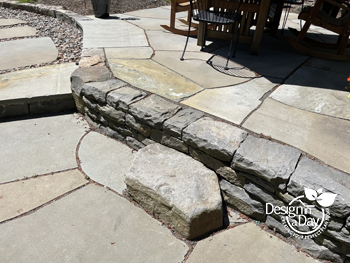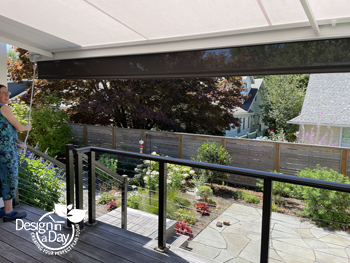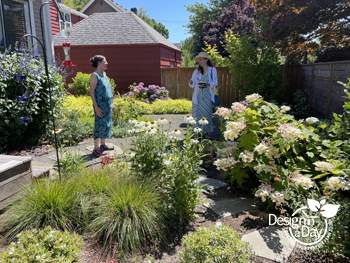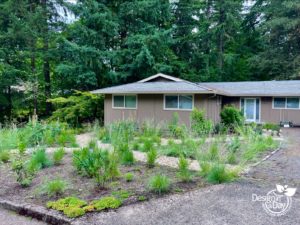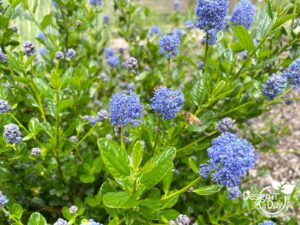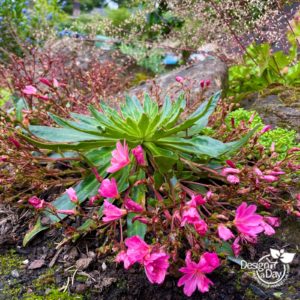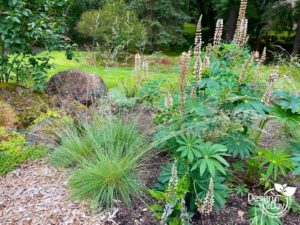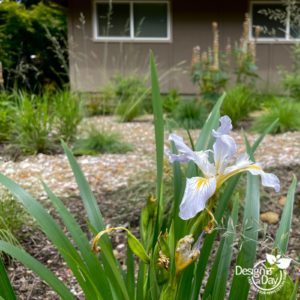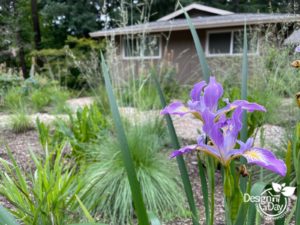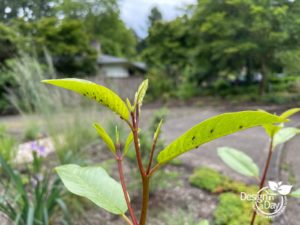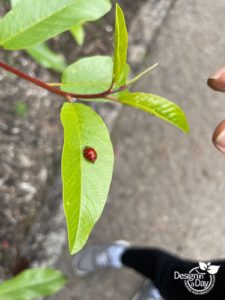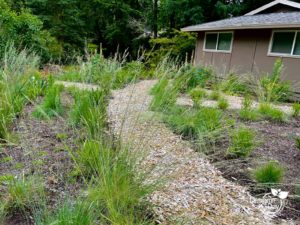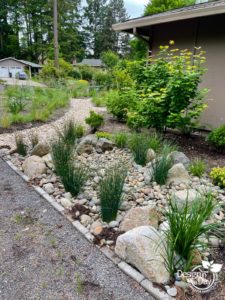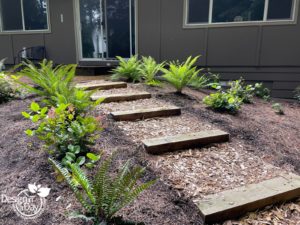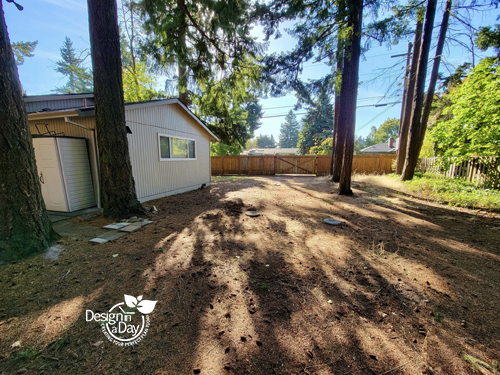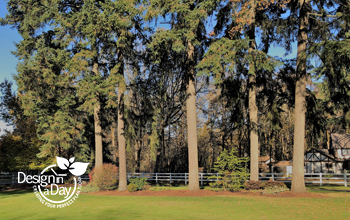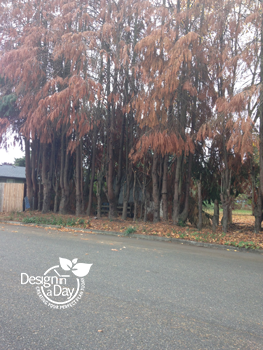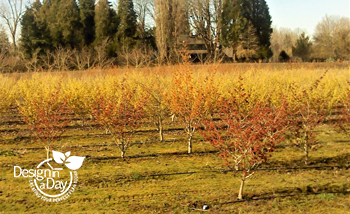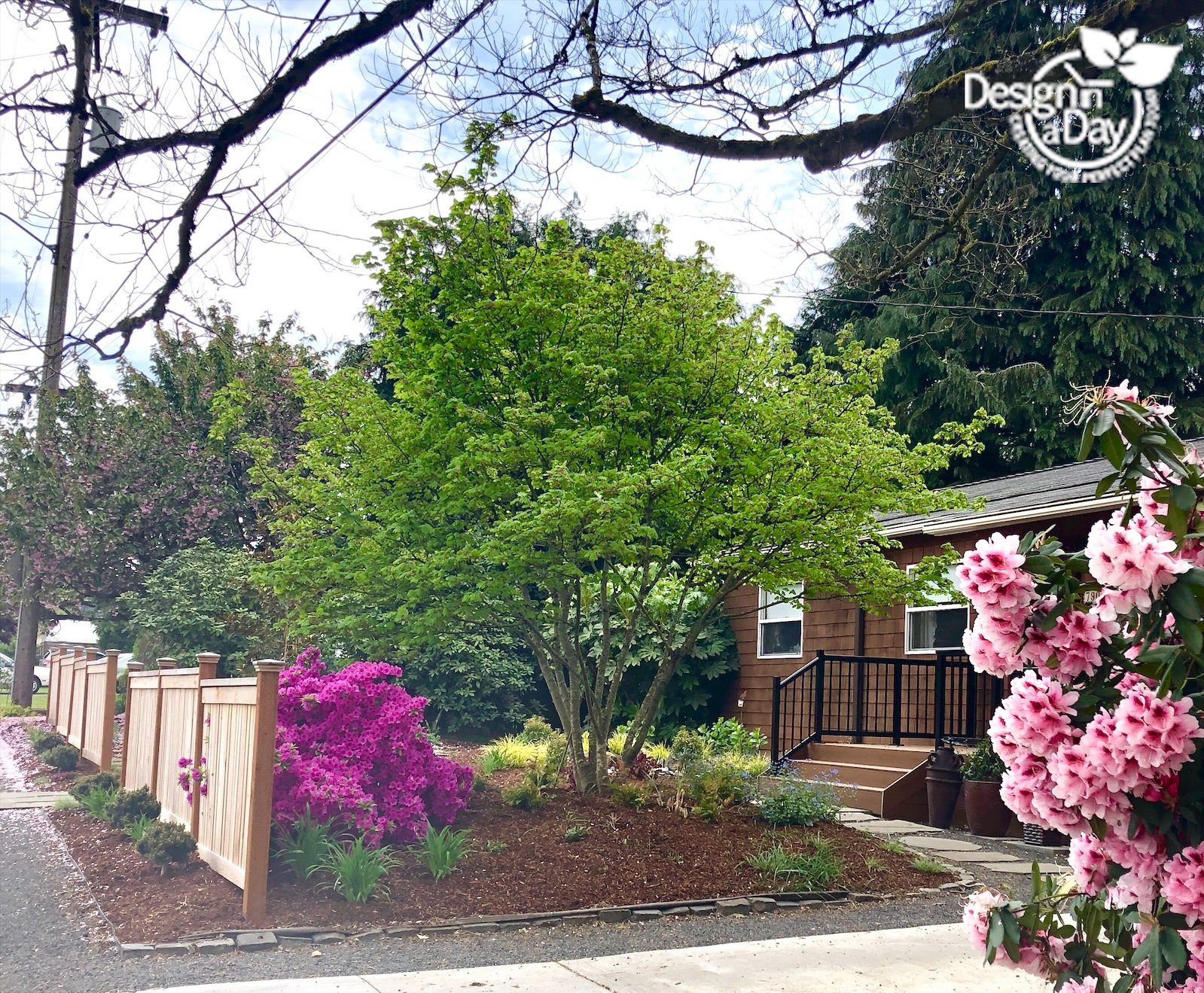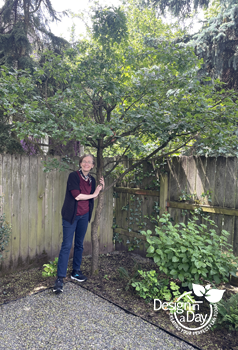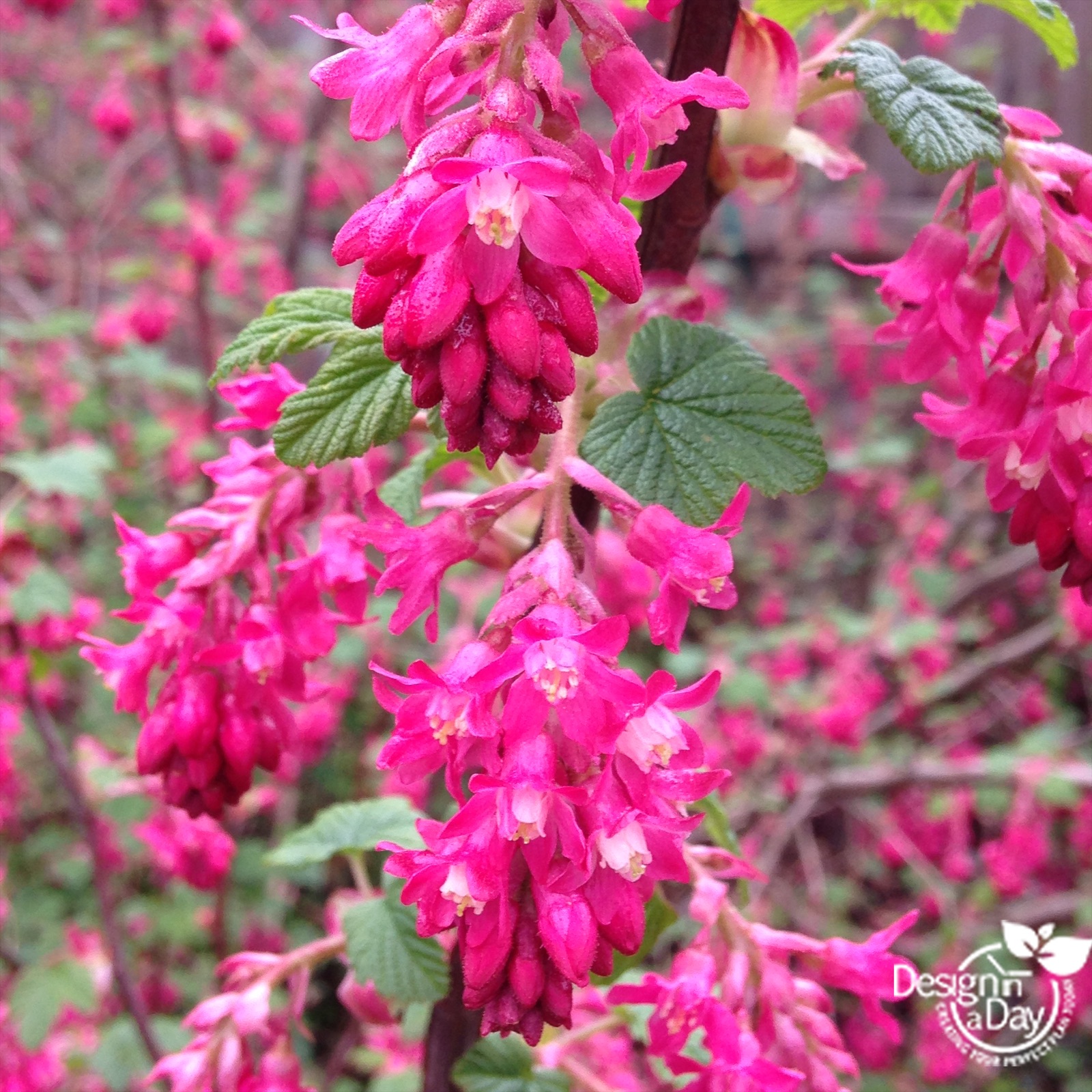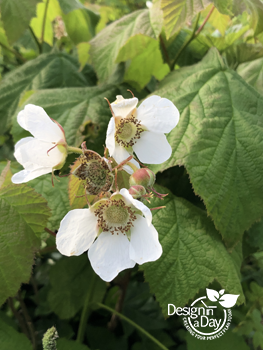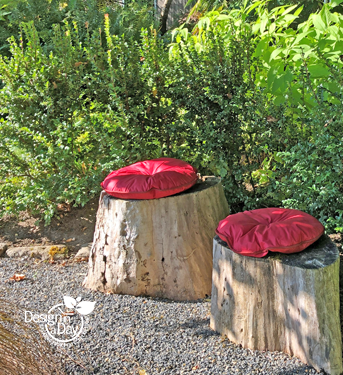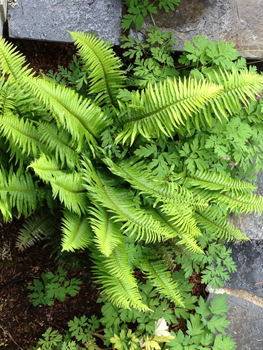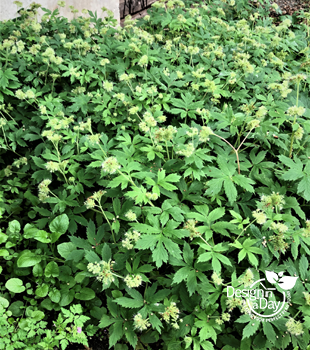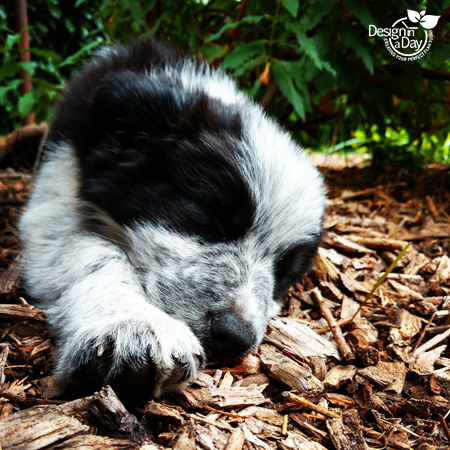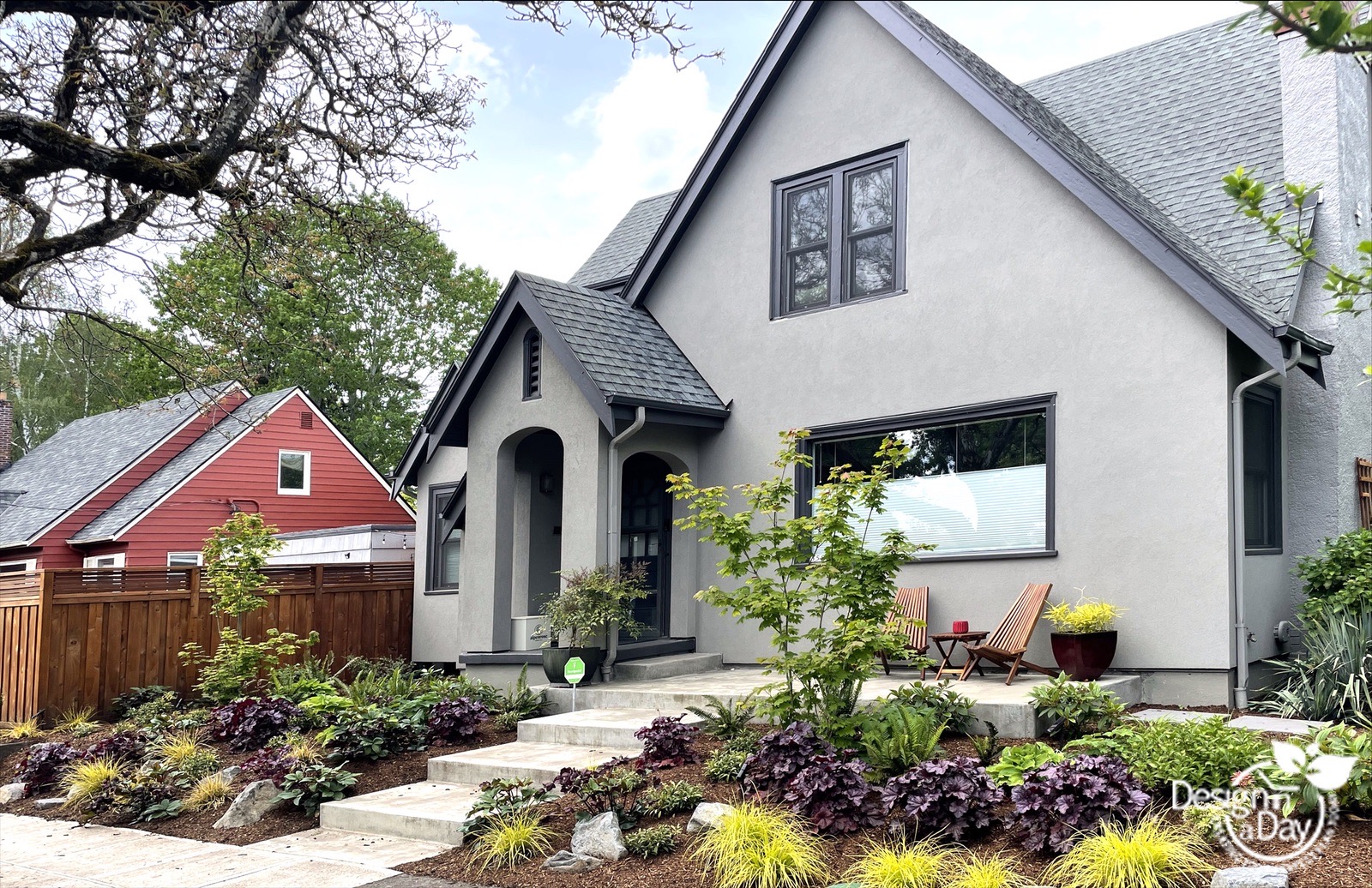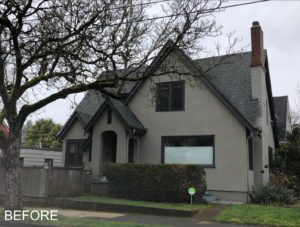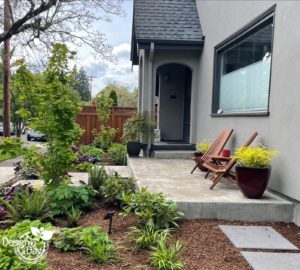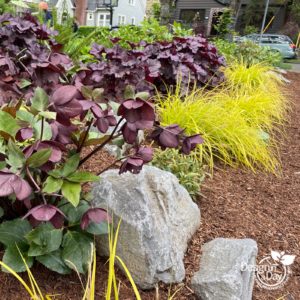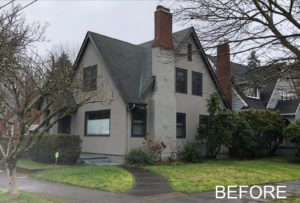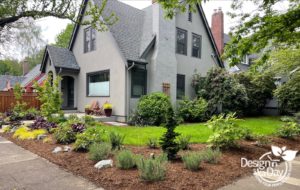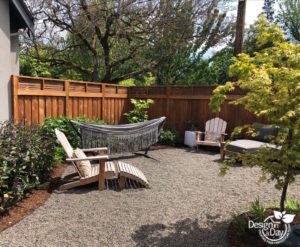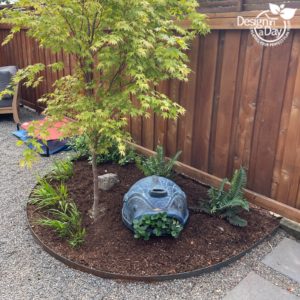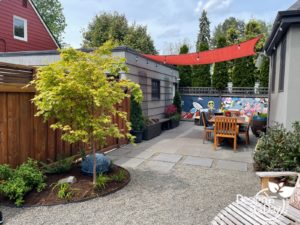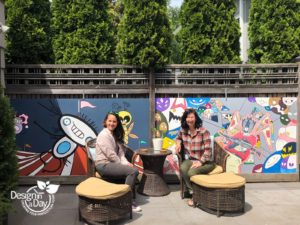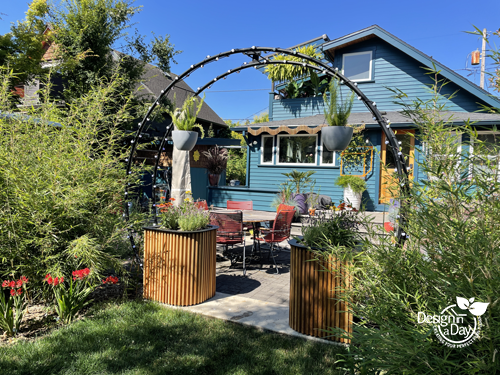
Privacy Landscape Design includes finishing touches applied by design collaborators Ryan and Michael
North Portland Back Yard Gets Private, Colorful Plantings
My new clients, Michael and Ryan, moved to N Portland’s Concordia neighborhood from a farm in Pennsylvania. They knew some horticulture science and had a lot of confidence coming into the project from both a design point of view and working with plants.
Their new home in the Concordia neighborhood was a 1910 bungalow. My clients hired me because they had no privacy and have a difficult landscape to work with. They believe in working with a designer and were sure I would amaze them with my solutions. It’s great when clients have high expectations.
My clients wish for a landscape design also included:
- Privacy for the patio to include dining and using the new hot tub
- Dog friendly areas and grass for their two dogs to play and poop on
- Interesting and colorful plants with lots of texture
- Integrate the existing patio into the new design
- Work with the existing aspen trees and magnolia
Privacy Landscaping
Privacy was a very big concern. Behind the house we had 3 homes with second story windows that had a good view into the patio and kitchen. The properties to each side also had views not advantageous to our private hot tub plans. Living in the city does mean getting to know your neighbors but not that intimately. And while in the hot tub we want to see natural beauty not someone doing their dishes.
The back porch was very attractive and had room for two people to sit and lounge but was too narrow for four. We tried a design that expanded the deck to fit a 4 top table but it was right on top of where we wanted the hot tub to go so it and a few other concepts went into the round file.
The former owners had installed a concrete patio and while I am sure it made sense to them, these odd concrete pedestals made no sense to us. They were 4′ long and about a foot tall and wasted so much valuable space for outdoor living. Huh? I’d love to know what they had on these pedestals. Big concrete lions?
Like most new homeowners they had already spent plenty of time and money getting the interior just right so I would consider carefully how to use the assets we had.
The Privacy Solution for the Patio and Hot Tub Room
We measured the sight angles together and discovered that 10’ tall evergreen plantings would block the views into the hot tub area and the proposed dining table corner of the patio. My design solution put our privacy plantings in right next to the patio not out at the back fence line.
Kitchen view and privacy – We also had Ryan stand in the kitchen while we mocked up the height at various locations for privacy plantings. It’s lovely to work on site and get the facts of exactly how high our privacy solutions needed to be. Virtual design has it’s merits but there is nothing like being on site to create the best fitting design.
My favorite clumping bamboo worked beautifully for the patio privacy solution. Ryan and Michael loved the texture and lush greenery of the Fargesia robusta ‘Campbell’ which grows 10′ in full sun (in Portland) and 12′ to 15’ tall in shadier settings.
I use this plant often for privacy solutions in city back yards because it’s tall enough to give us privacy, but doesn’t turn the whole yard into a shade setting. It is evergreen and so is ideal for hot tub privacy even in winter and my clients love the drama and tropical effect of the leaves and form in the garden. My only caveat on clumping bamboo is the amount of water it takes for it to thrive. I prefer it to be on its own irrigation zone for this reason. It needs more water than your other plants do and it will not become drought tolerant. To put it on the same zone with other plants means you will waste water by over watering your other plants.
Existing Tree in the Perfect Spot
We had an evergreen Magnolia virginiana tree but because it looked wimpy my clients wanted it gone. Here is the cool thing. This is the only magnolia tree I know about that will be happy as a companion to the frequently watered bamboo. Both plants want evenly moist soils and once this magnolia recovers from two years without proper watering it will get taller than the bamboo and screen out the rest of those windows….oh did I mention it grows really fast and has a very fragrant flower. I was and am very excited about having this existing tree to work with. It was planted in the perfect place to provide year round privacy from a corner neighbors windows. All it needed was a few years of proper watering. And the bamboo is fine with some shade so the Magnolia can grow up to be itself without goofing up our lovely scheme. This is a rare moment in my design life but one I am always looking for.
Evergreen Privacy Selection Issues
Stepping aside for a moment: I have limited plant choices when a privacy solution calls for evergreen plant material. Most clients don’t want to give up the space that a hedge takes but more important….they don’t want to prune a hedge regularly which is what they need. I had already placed one evergreen hedge plant, Rhamnus Alata Varigata Variegated Buckthorn, between the hot tub and the side yard neighbor and it will have to be sheared a few times a year to keep it nice and thick. That is a lot of work so adding another hedge was out. Trees are too big and just the wrong solution for the center of a small city back yard.
Working with the Existing Aspen Trees
Aspen Trees in small city yards is a bad idea and yet we had 4 existing mature aspen trees to work with. And hey there, Aspen are beautiful trees with white trunks, fluttering leaves and gold fall color. Since some butterflies and native insects lay their eggs in the leaves they are desirable for that reason alone. Too bad they can be evil and sucker over an entire landscape and then head over to your neighbors. I never put them in a design ever.
Second Opinion-Can I trust these Aspen trees to behave?
We removed one of the four existing mature Aspen trees as it was not growing well. The remaining trees were so beautiful, well placed and were providing summer privacy and habitat for pollinators and birds. There were no evil suckers, not even one and my clients loved them. I was so torn about them so I sought professional advice from the head grower at Heritage Seeds who said since the aspen had not suckered yet there was a very good chance they would not ever. He grows and sells a type of aspen that is now (last 15 years or so) being used in the Willamette Valley by braver(?) or more fool hardy designers than I am. It is a different Aspen than the ones I have avoided but he says no guarantees about suckering even with the new ones. And if I had 20 years experience with using Aspen that was positive I would feel differently.
Check out the fun vine grid made by my clients that dresses the down spout.
Careful Plant Selection Starts with Experienced Designer
You are hiring me to recommend plants that I know and trust. As a landscape designer it’s easy to want to use an in vogue plant (that you have no experience with) in designs. This is wrong for me and my practice and I don’t do it. OK yes occasionally I will use a sort of new perennial or even a shrub if my clients want a more adventurous planting palette. Even then I have seen it in other designers gardens or it comes from a grower I trust. If a plant has a well deserved reputation as being destructive, it won’t be in any of my designs.
Experience counts and I have been around long enough to see what harm aspen can do especially for small city properties. I would not hesitate to use the new ones from Heritage seedlings on large properties where we are doing nature reclamation. In these settings they are not typically irrigated so grow slowly and are planted as a community with other native plantings that are a benefit to wildlife.
Carol Lindsay stands in Concordia neighborhood privacy landscape design going on year 2.
Finishing the Privacy Design for Concordia Back Yard
The Aspen do a good job of making summer privacy from the houses behind us but we still had holes. We used evergreen magnolia ‘Teddy Bear’ to finalize our privacy plan. Teddy Bear Magnolia has a cute name due to very fuzzy gold brown felted backsides to the dark green leaves. This tree has a narrow silhouette, is evergreen with large white summer flowers.
Plantings to go with the Aspen Trees
We added some native plants including flashy Echinacea to provide for the Aspens visitors, Western Tiger Swallow Tail and Loquinns Admiral butterflies. A native blue fescue grass is part of the planting plan here and it hosts a variety of butterflies and insects. Ryan is experimenting with different native flower seeds to include Gillia capitata, California poppy and Lupine to expand the diversity of visiting pollinators.
The north facing Aspen got a very different planting mix. It already had a large group of autumn fern around it which we kept. I added 3 white flowering clethra shrubs, Summersweet or Clethra alnifolia The clethra, has a strong enough root system to compete with the Aspen and attracts hummingbirds, and bees including bumble bees. The fragrant white flowers in spring with the white bark of the aspen create a beautiful vignette. I also use it around the edges of rain gardens in Portland. We used Japanese forest grass ‘All Gold’ to add color. This soft grass is also very popular with their dogs who love to munch on the blades.
Path and Surface Materials for Back Yard Design
Materials used: New concrete was added to mask where the odd concrete pedestals were. Path materials used were both crushed rock with steel edger, and cedar chips for paths without edger. The lawn was replaced with a tall type fescue which takes less water than a traditional lawn.
Clients Add Their Design Expertise
I mentioned they brought a lot of confidence into the project and were strong collaborators. After the contractors installed our design, a great looking landscape I will brag on us all……. Ryan and Michael went to work adding the curved arbor pergola called a moon gate that became the heart of the design, and a custom wood vine trellis to the back porch exterior.
Look at the way they added both the lighting and the fern baskets to the arch. The two planters under the curved arch were designed and built by Michael from wood and he used fiberglass for the top frame of the planter. They continue to experiment with plantings.
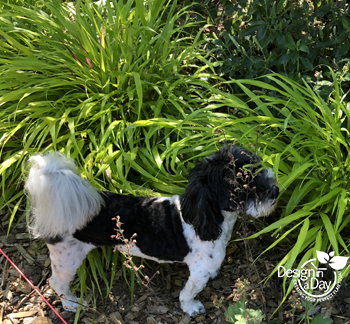
Hakonechloa macra ‘All Gold’ being nibbled on by a 4 legged client Concordia neighborhood N. Portland
Planting Day
My clients found their own contractors and I worked with them to order the plants from my plant broker and again to physically place the plants and coach on planting some of the plants that needed special techniques. They did a great job.
I was able to work with Brian to make any necessary plant substitutions. Since Covid many plants are scarce so we had to swap a few out but mostly we found the plants we wanted. The design was installed in fall of 2020 and these photos are from summer of 2022.
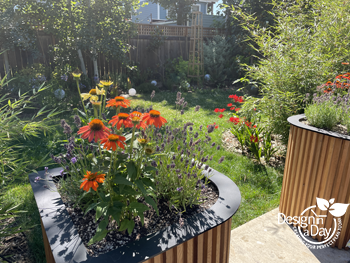
Vibrant coneflower (Echinacea) sizzles with color in privacy landscape design for small city back yard
Testimonial
Ryan gave me this comment to use from our design process, “We loved our experience and would recommended you to all our friends! We are very excited to see our finished project, and will surely enjoy it for years to come.”
~Ryan N. of Portland
If you are looking for residential privacy landscaping in Portland, contact us for more information.

